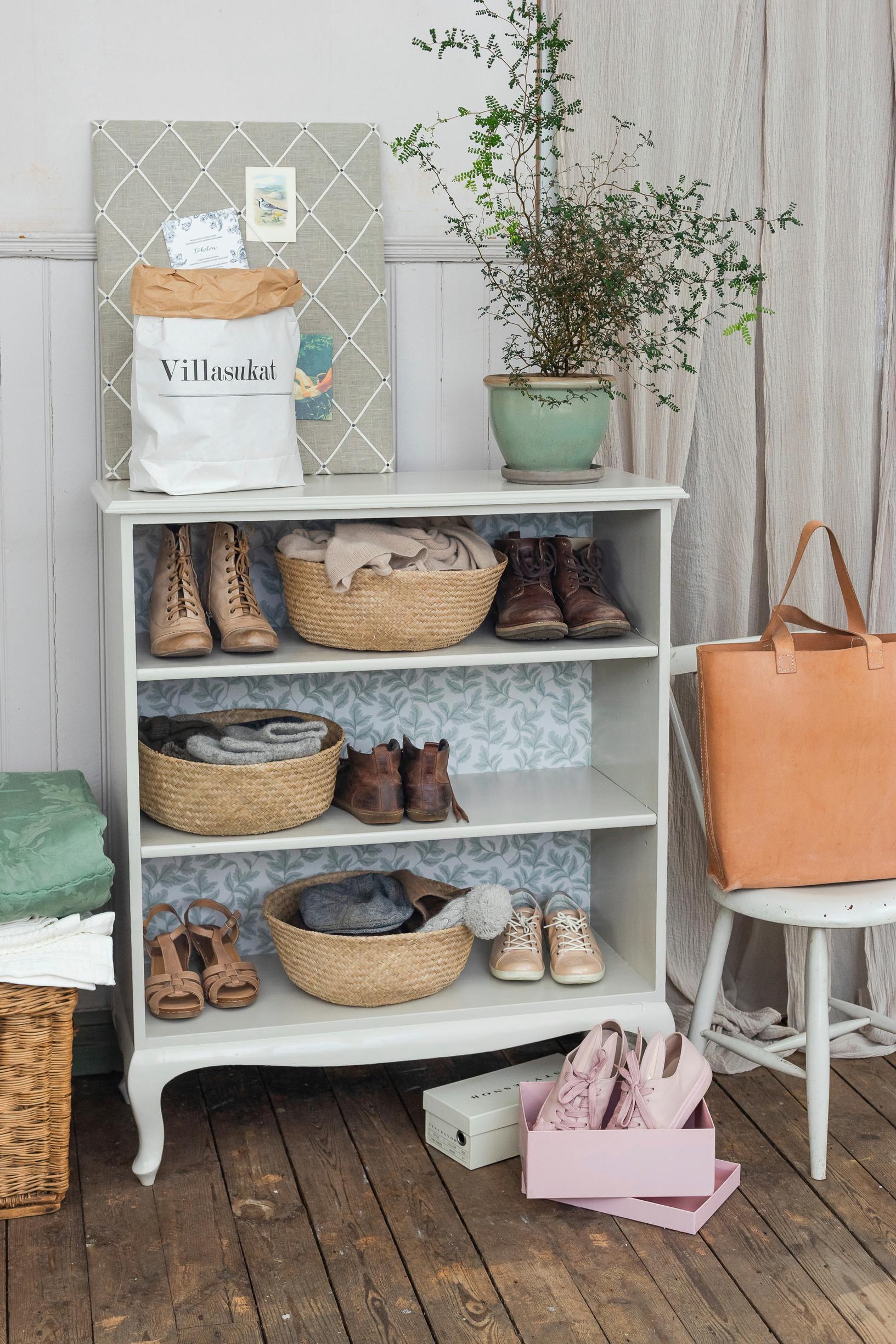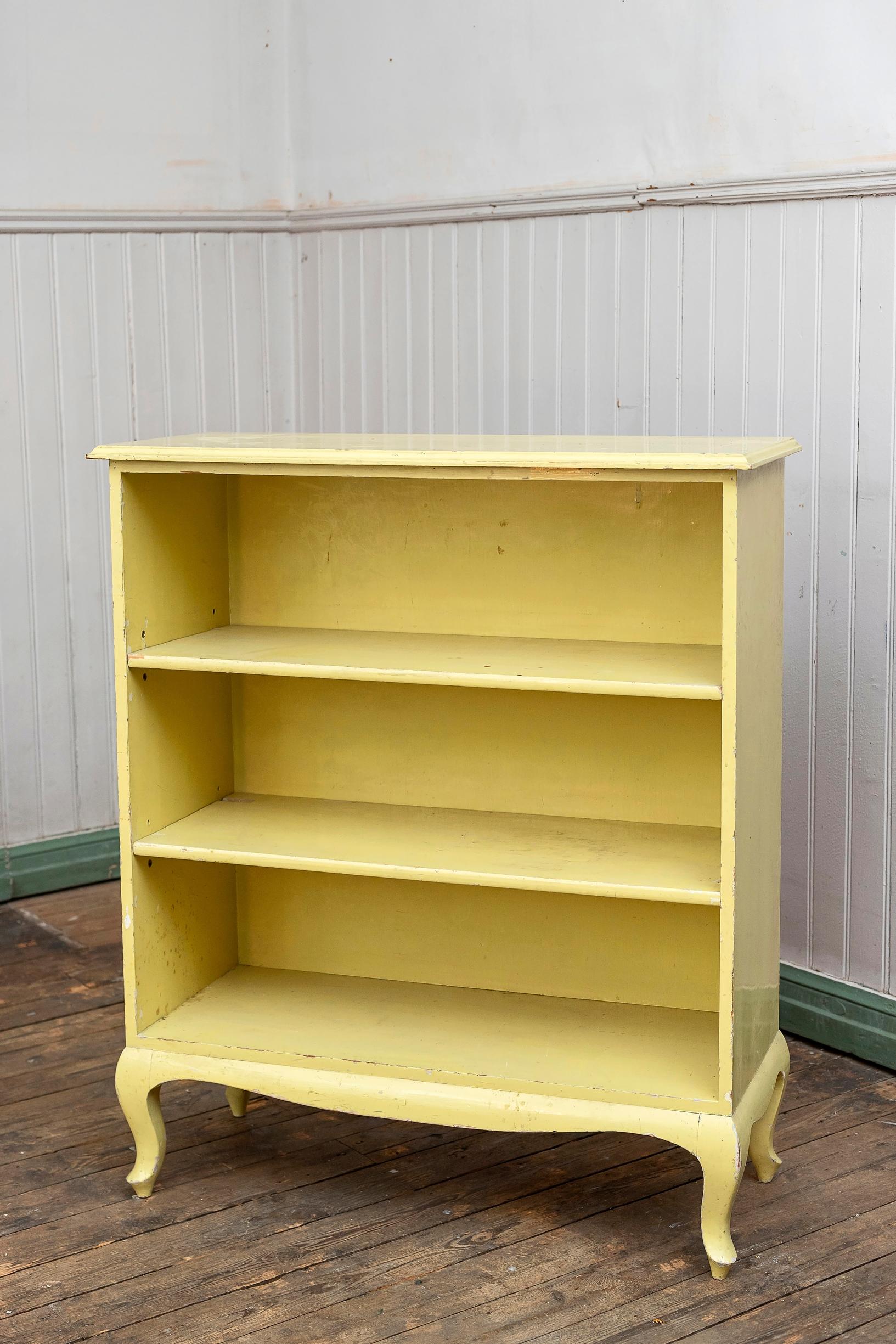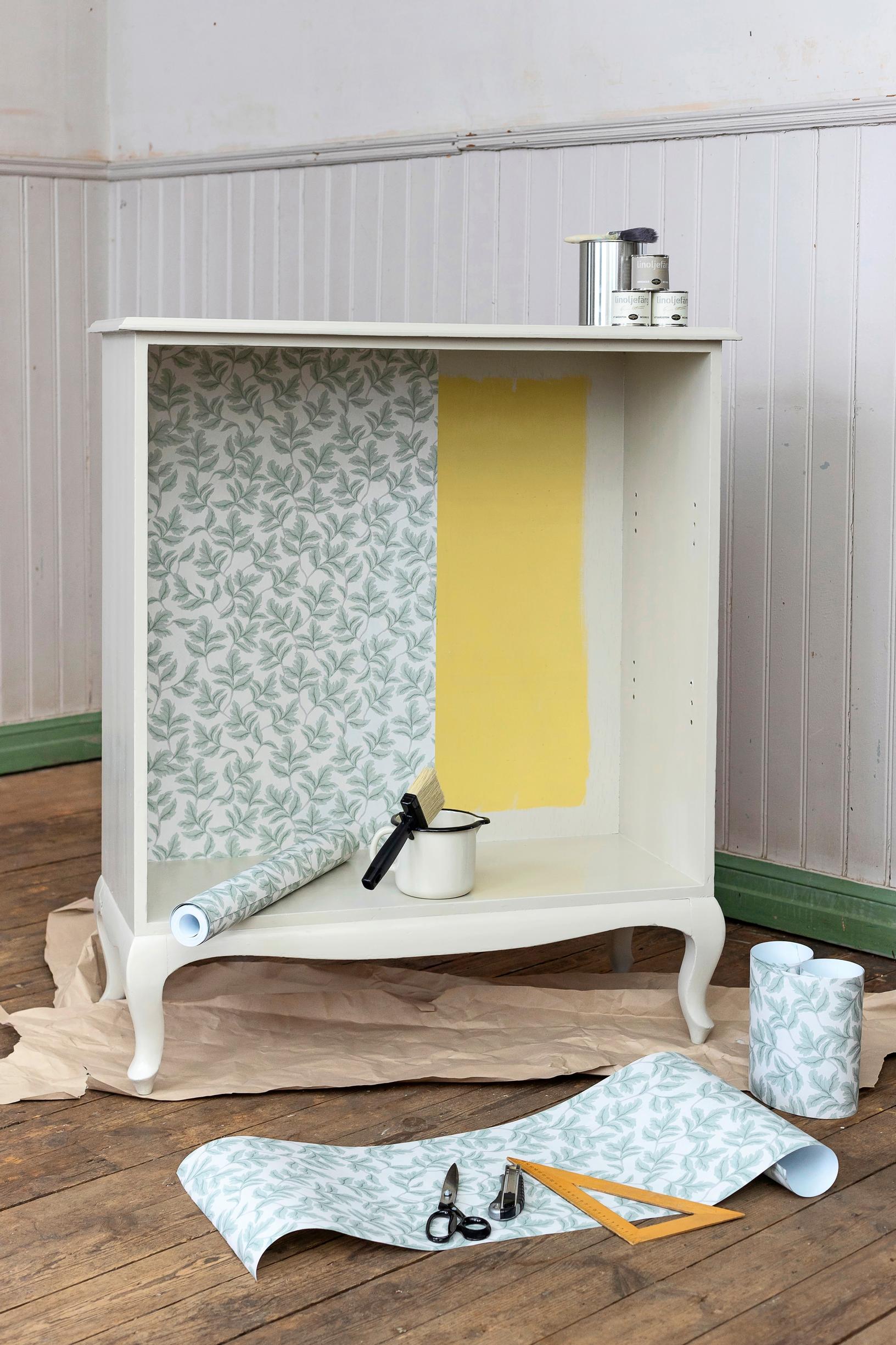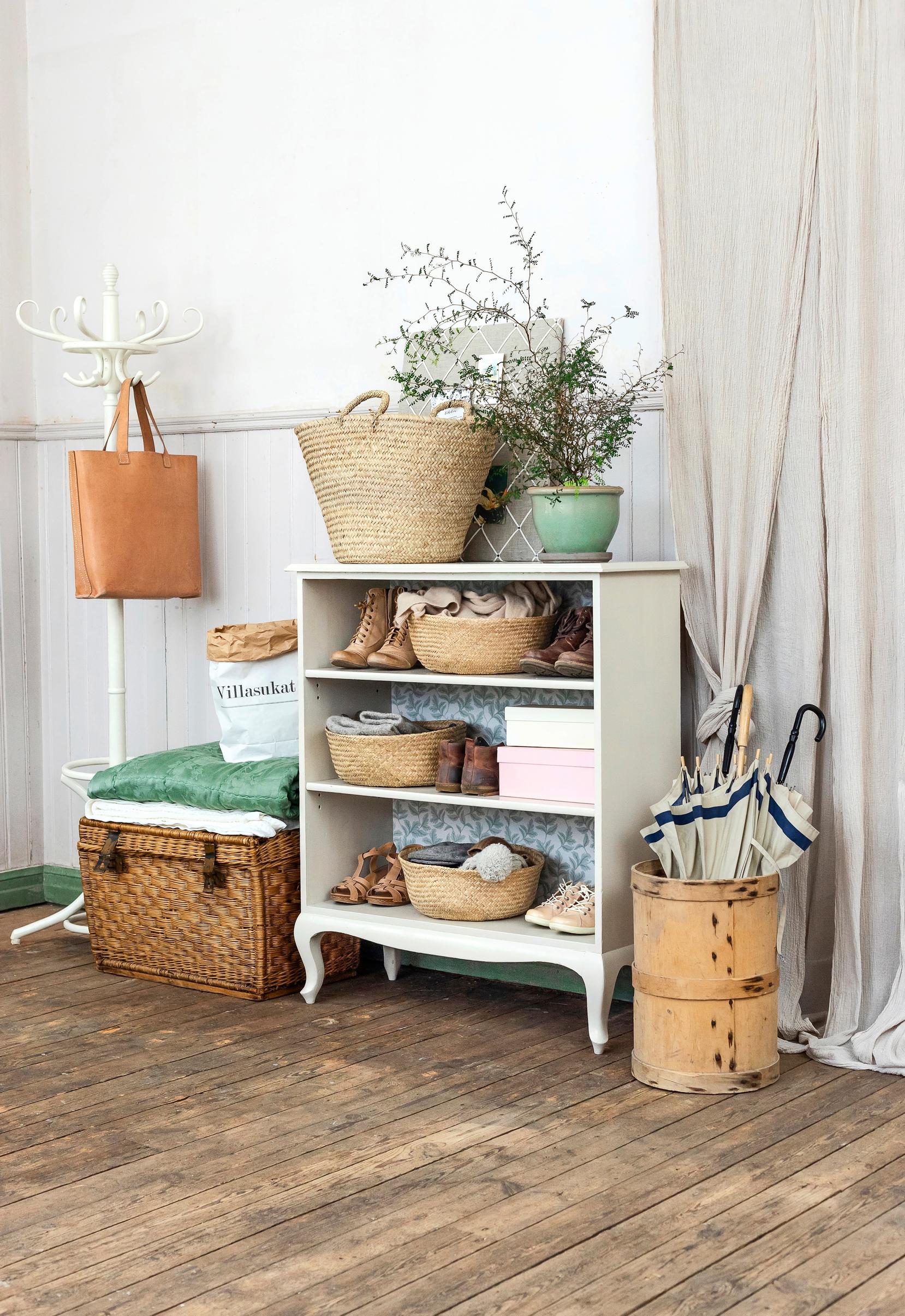
Step into style
Bookshelf to shoe rack: upcycle and brighten your entryway
Tame your entryway shoe chaos by refreshing a bookshelf with wallpaper and dedicating it to your shoes. With eco-friendly paste, it’s easy to swap out the wallpaper for a new design. Check out Katja Rinkinen’s instructions!
Shoe shelf—supplies:
- a shelf unit or cupboard
- wallpaper or wallpaper scraps
- 2 × 0.1 l (3.4 fl oz) containers of linseed oil paint, shade cream white
- 0.1 l (3.4 fl oz) container of linseed oil paint, shade umber gray
- an empty paint container
- sandpaper
- wood filler and a filling knife
- wallpaper paste powder or wheat flour paste
- 2 paintbrushes
- scissors and a utility knife
- a ruler and a cloth.


Shoe shelf—instructions:
- Sand off any loose paint on the shelf, or roughen a glossy finish until it’s matte. If needed, fill holes with wood filler.
- In an empty container, combine 0.2 l (6.8 fl oz) of cream white linseed oil paint with 3–10 teaspoons of the umber gray shade, depending on your taste. Paint the shelf 2–3 times with very thin coats. Allow about 2–3 days of drying time between coats.
- Paint the edges of the back panel once so the old color won’t peek out around the wallpaper’s edges.
- Mix the paste powder with water according to the package instructions, or boil your own wheat flour paste. Measure a wallpaper strip for the back panel, leaving a little extra at the top and bottom. Cut the second strip to the same length as the first.
- Paste the first wallpaper strip and put it in place. You can spread the paste on the furniture or on the wallpaper itself. It’s easier if you lay the furniture on its back. Wipe away any excess paste with a slightly damp cloth. Use a ruler and a sharp utility knife to trim the top and bottom edges neatly.
- Carefully measure the width of the second strip and trim it with scissors. Paste the wallpaper in place the same way as the first strip.

Most recent
Latest


